By the NCFishes.com Team
Along North Carolina’s shore there are three families of flatfish comprising five or six species having eyes on the right side of their body facing upward when lying in or atop the substrate (NCFishes.com; Tracy et al. 2020; Table 1; Figure 1). Please note: Tracy et al. (2020) may be downloaded for free at: https://trace.tennessee.edu/sfcproceedings/vol1/iss60/1.] The families and species can be confusing to tell apart. The key characteristics provided in Table 1 should enable one to differentiate between the three families and this document will aid you in the identification of three species in the Family Achiridae (American Soles) in North Carolina. Generally, soles are small, flat, right-facing fishes (i.e., the left side of the body is on the substrate) with small, minute eyes and of little commercial or recreational value (Rohde et al. 2009).
| Family | Common Name | Key Characteristics (adapted from Kells and Carpenter (2014); Munroe (2002a; 2002b)) | No. Species |
|---|---|---|---|
| Achiridae | American Soles | Preopercular margin not free, concealed by skin or represented only by a naked superficial groove. Dorsal fin extending forward well in advance of eyes, the anterior rays concealed within a fleshy dermal envelope and difficult to see. Lateral line essentially straight, without high arch over pectoral fin; often indistinct, but most readily seen on the eyed side, usually crossed at right angles by accessory branches (achirine lines) extending toward dorsal and anal fins; Urinary papilla on eyed side. | 2 or 3 |
| Poecilopsettidae | Bigeye Flounders | Preopercular margin free, not covered with skin and scales. No tentacle associated with either eye. Pectoral and pelvic fins present. Pelvic fins short-based, free from anal fin, and symmetrically placed on either side of midventral line. Caudal fin with 2 black spots on distal part of outside caudal-fin rays. Lateral line present below lower eye; well developed on eyed side with well-defined curve above pectoral fin; no supratemporal branch; lateral line rudimentary or absent on blind side. Urinary papilla on eyed side. | 1 |
| Pleuronectidae | Righteye Flounders | Preoperculum with a free margin. Pelvic fins symmetrical in shape and short-based. Lateral line well developed on both sides of body. | 2 |
The three species of soles reported from North Carolina waters are: Lined Sole, Achirus lineatus, Naked Sole, Gymnachirus melas, and Hogchoker, Trinectes maculatus. Unlike many families of flatfishes found in North Carolina’s waters, the Family Achiridae is known only by a handful of local or vernacular names such as freshwater flounder or simply, soles. However the three common names, Lined Sole, Naked Sole, and Hogchoker, are the American Fisheries Society-accepted common names (Page et al. 2013) and each of the scientific (Latin) names actually means something (please refer to The Meanings of the Scientific Names of Soles, page 8).
Soles typically occupy sandy and muddy substrates and sandbars from shallow wadeable freshwater streams (Hogchoker) to 600 ft deep (Naked Sole) (Kells and Carpenter 2011). Our three species of soles reach only about 200 to 230 mm (8 to 9 inches) in length. None of the species are state or federally-listed as imperiled nor is their harvesting (take) regulated.
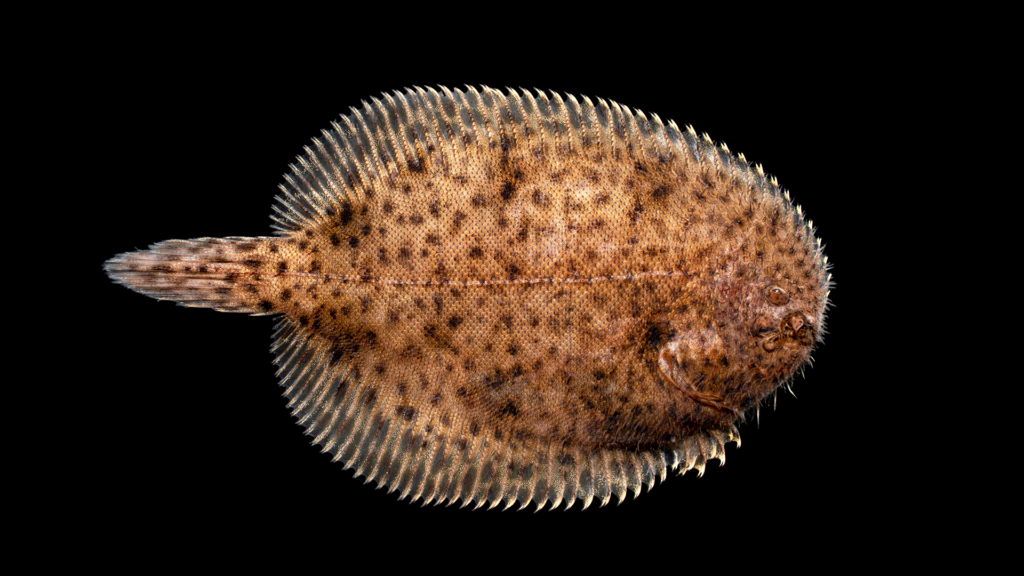
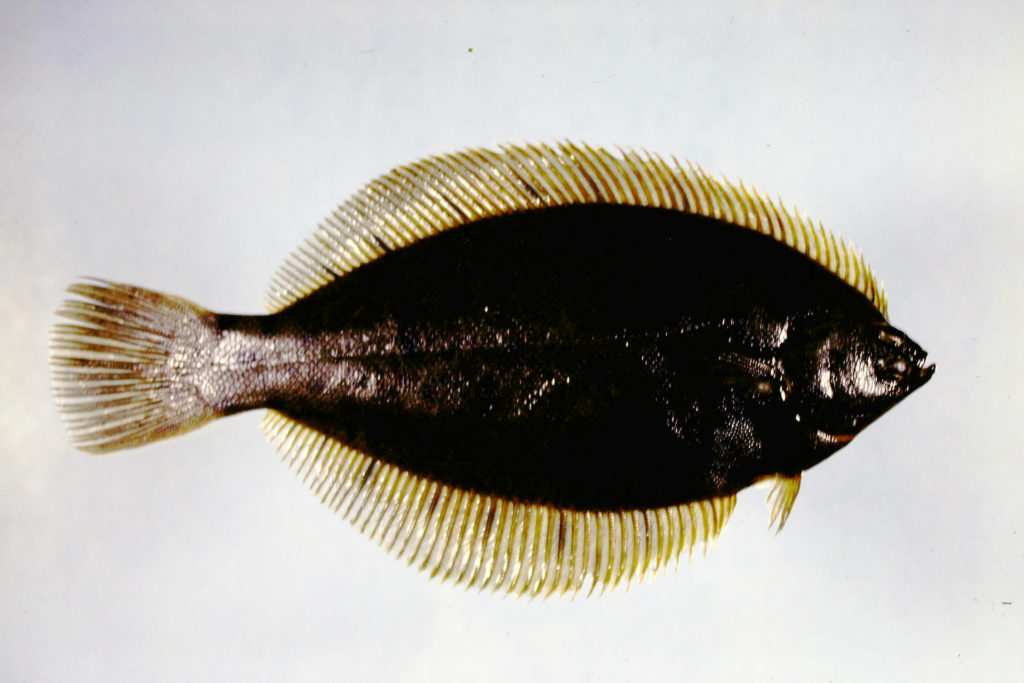
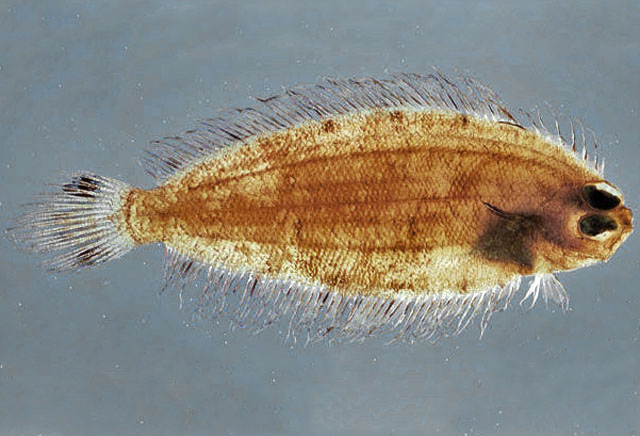
Figure 1. Examples of right-facing flatfishes found along the coast of North Carolina. From top: Achiridae (Hogchoker, Trinectes maculatus), Poecilopsettidae (Deepwater Dab, Poecilopsetta beanie), and Pleuronectidae (Winter Flounder, Pseudopleuronectes americanus). Photograph of Deepwater Dab courtesy of the Smithsonian Tropical Research Institute’s Shorefishes of the Greater Caribbean online information system,https://biogeodb.stri.si.edu/caribbean/en/pages/random/11989; accessed March 01, 2021).
Lined Sole and Naked Sole are less commonly encountered than Hogchoker (Maps 1-3). [Note: see Supplemental Maps 1-3, page 9, showing North Carolina’s 100 counties, 21 river basins, and 4 physiographic regions.] However, the reported occurrence of Lined Sole, Achirus lineatus, in North Carolina waters is vexing. Its occurrence is based upon a single collection of five specimens collected by the North Carolina Wildlife Resources Commission from Jackeys Creek (off NC 130 [=133], [2.0] miles S Clairmont, [ca. 2.8 air miles SW center Wilmington]) in Brunswick County during their 1962 survey of the Cape Fear Basin (Map 1; Louder 1963; Starnes and Hogue 2011). This collection was vouchered and identified by a person unknown at the North Carolina State Museum of Natural Sciences (NCSM Catalogue No. 1385). However, the jar of five specimens cannot be found and now has been missing for several years (Gabriela M. Hogue, pers. comm.).
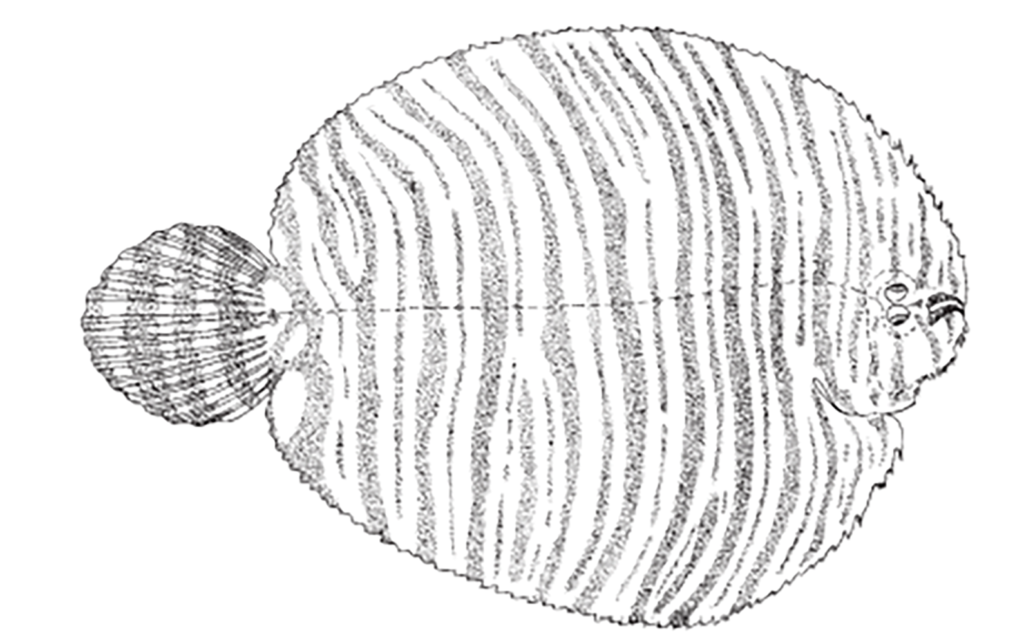
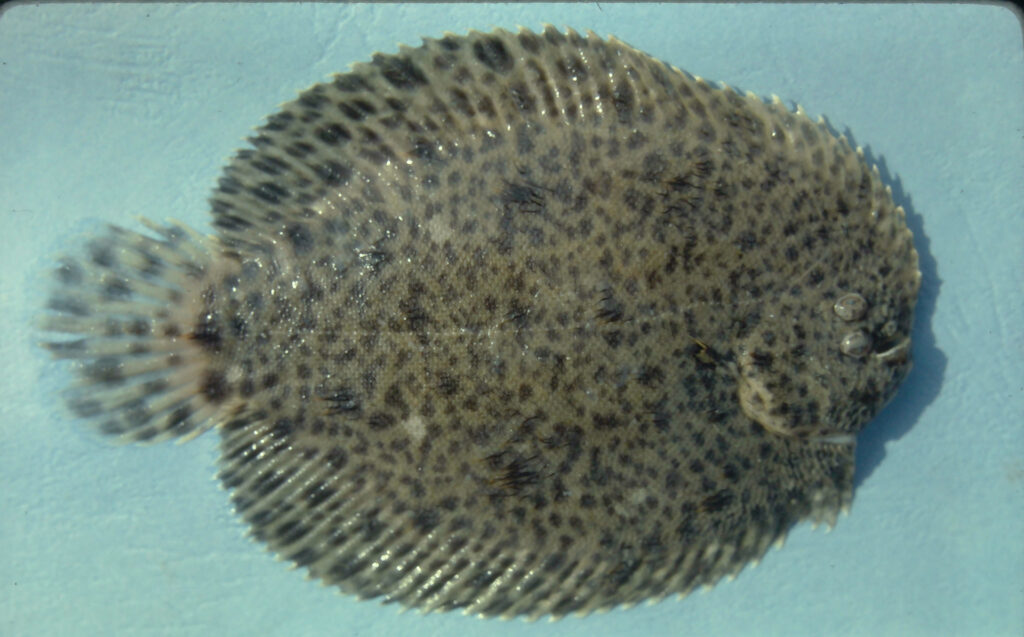
Even though Jackeys Creek, a tributary to the Brunswick and Cape Fear rivers, is not far from South Carolina, Lined Sole does not occur north of South Carolina (Kells and Carpenter 2011). Additionally, Lined Sole has never been encountered by North Carolina Division of Marine Fisheries field staff (Fred C. Rohde, pers. comm.). There is no way to ever authenticate this record until the jar of specimens is found, but it is most likely that the five specimens were in reality misidentified Hogchokers.
Hogchoker is the more commonly collected of the three species of soles. It is found in all basins along the coast from the Virginia state line to the South Carolina state line, except for the Waccamaw basin (Map 3; Tracy et al. 2020). Hogchoker, as young, may seasonally ascend coastal rivers into fresh water as far upstream as the Fall Zone as a normal part of its life cycle. It has been found as far inland as Rockingham (more than 200 miles upstream from Winyah Bay and the Atlantic Ocean in South Carolina) in the Yadkin, near Elizabethtown in the Cape Fear basin, near Raleigh in the Neuse basin, near Tarboro in the Tar basin, and near Scotland Neck in the Roanoke basin (Map 3; Tracy et al. 2020).
The identification of soles is relatively straight-forward. Key characteristics for their proper identification include color patterns, presence or absence of scales, the number of pectoral fin rays on the eyed and blind sides, and the presence or absence of an interbranchial septum foramen (please refer to the Identification Key to the Freshwater and Marine Soles (Family Achiridae) in North Carolina).
If you have troubles with your identifications, just send us (https://ncfishes.com/contact/) an e-mail and include as many quality digital photographs as you can along with all the pertinent locality descriptors so that we will know from where the fish came.